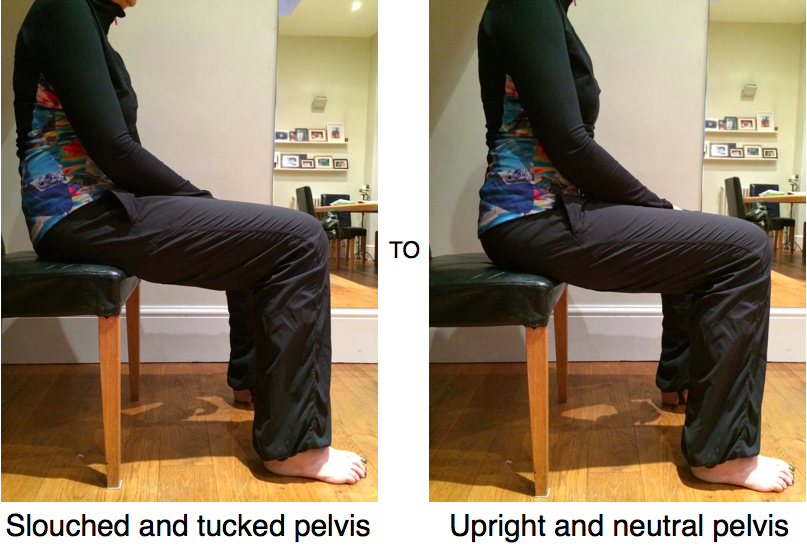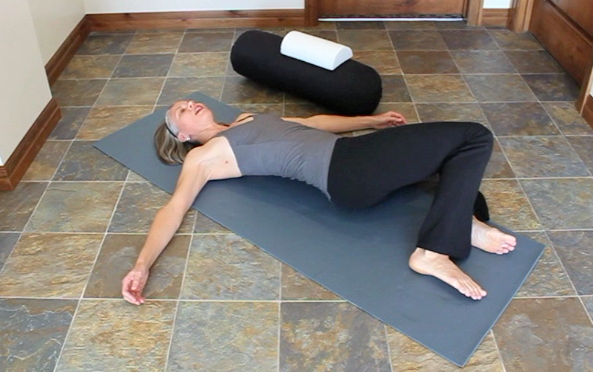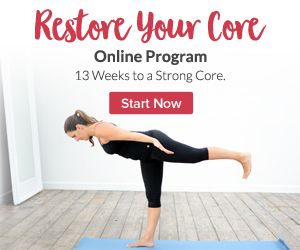| In healthy movement, the sacrum moves relative to the inominate bones. When the sacral promontory moves forward into the pelvic bowl, the motion is called nutation; counternutation is the opposite motion. The optimal position for the sacrum in standing and sitting is slightly nutated between the inominates. This is the goldilocks position: not too tight and not too loose. During sitting and standing, you can diminish stress on the SI joints by maintaining a neutral pelvis. | |
Being mindful of HOW we stand and sit are simple steps to begin to unravel the increased loading and compression on the spine and SI joints, as well as the tension and pull on corresponding ligaments and muscles.
Before going over standing and sitting, let’s look at the anatomy: The pelvic girdle is comprised of the 2 pelvic (inominate) bones and the sacrum. The inominate bones join in the front by a thick fibrocartilage disc similar to that of the vertebral discs. This area is called the pubis or pubic symphysis. In the back, the inominate bones attach to the sacrum, creating the sacroiliac joints.
The function of the pelvic girdle is to transfer the loads between the trunk and the lower extremities via the spine and hips (lumbopelvic-hip complex). There are 35 muscles that attach directly to the pelvic girdle. Therefore, the mobility and stability of the SI joints depends on the interaction of these muscles, ligaments, fascia and nerves that surround the pelvic girdle.
Learning how to standLook around you, most people stand with their pelvis out in front and their shoulder’s and ribcage back (as in the pic below). This posture causes the sacrum to fully nutate, meaning that this is the maximally closed position of the SI joints. This position can create low back and SI joint aching during prolonged standing. Correct your alignment by shifting your hips back, allowing your trunk to move forward so the line of gravity travels through your joints: shoulder, hip, knee and ankle. Now the pelvis is in neutral: the pubic bone and ASIS line up vertically, and the SI joints are in optimal position. | Learning how to sitMany people slump their spine and pelvis while sitting watching TV, or sitting slumped at the computer. In this posture, the weight of the body is positioned behind the SI joints. This places the SI ligaments under load, the sacrum is tucked (counternutated), and pressure is at the tailbone (coccyx). The stress of this position will stretch the ligaments of the SI joint, and can also create tailbone pain. Maybe you can relate to having pain while trying to walk after sitting like this for awhile. The initial steps are excruciating until you are able to walk it out as the ligaments regain their normal position. Correct your alignment by sitting on your ischial tuberosities (SITS bones). The pelvis and spine should be in neutral. |















 RSS Feed
RSS Feed